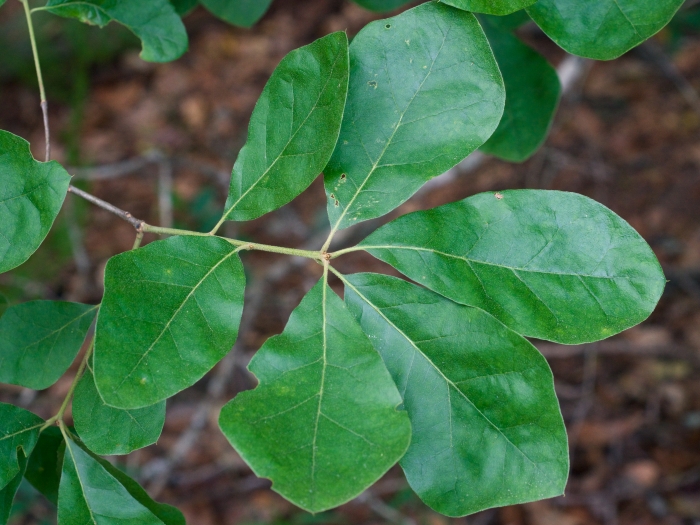Arkansas Oak
(Quercus arkansana)
Arkansas Oak (Quercus arkansana)
/
/

Eric Hunt
CC BY-SA 4.0
Image By:
Eric Hunt
Recorded By:
Copyright:
CC BY-SA 4.0
Copyright Notice:
Photo by: Eric Hunt | License Type: CC BY-SA 4.0 | License URL: https://creativecommons.org/licenses/by-sa/4.0 | Uploader: Eric in SF | Publisher: Wikimedia Commons | Title: Quercus_arkansana.jpg | Notes: {{BotMoveToCommons|en.wikipedia}} {{Information |Description={{en|0}} |Source=Transferred from [http://en.wikipedia.org en.wikipedia]; transferred to Commons by [[User:Smooth_O]] using [http://tools.wikimedia.de/~magnus/commonshelper.php CommonsHelper]. | |
















Estimated Native Range
Summary
Quercus arkansana, commonly known as Arkansas Oak, is a deciduous tree native to bottomland forests, floodplains, and along streams in the Southeastern United States. It typically grows to a height of 15-40 feet (5-12 meters) and a width of up to 25 feet (8 meters). The Arkansas Oak has a rounded crown with a moderate growth rate and is not commonly found in cultivation. Its leaves are deeply lobed, turning yellow to russet in the fall, and it produces acorns that are valuable food sources for wildlife.
Arkansas Oak is not widely used in urban landscaping due to its rarity and specific habitat requirements. However, it can be a suitable choice for naturalized areas or restoration projects where conditions mimic its native wetland settings. It prefers full sun but can tolerate partial shade, and while it is adapted to wet conditions, it requires well-drained soils to prevent root rot. There are no widely known cultivars of this species, and it is generally free from serious pests and diseases, although it may be susceptible to oak wilt.CC BY-SA 4.0
Arkansas Oak is not widely used in urban landscaping due to its rarity and specific habitat requirements. However, it can be a suitable choice for naturalized areas or restoration projects where conditions mimic its native wetland settings. It prefers full sun but can tolerate partial shade, and while it is adapted to wet conditions, it requires well-drained soils to prevent root rot. There are no widely known cultivars of this species, and it is generally free from serious pests and diseases, although it may be susceptible to oak wilt.CC BY-SA 4.0
Plant Description
- Plant Type: Tree
- Height: 15-40 feet
- Width: 10-25 feet
- Growth Rate: Moderate
- Flower Color: N/A
- Flowering Season: Spring
- Leaf Retention: Deciduous
Growth Requirements
- Sun: Full Sun
- Water: Medium
- Drainage: Fast
Common Uses
Bee Garden, Bird Garden, Butterfly Garden, Low Maintenance, Rabbit Resistant
Natural Habitat
Native to bottomland forests, floodplains, and along streams in the Southeastern United States
Other Names
Common Names:
Scientific Names: , Quercus arkansana, Quercus caput-rivuli, Quercus arkansana var. caput-rivuli,
GBIF Accepted Name: Quercus arkansana Sarg.